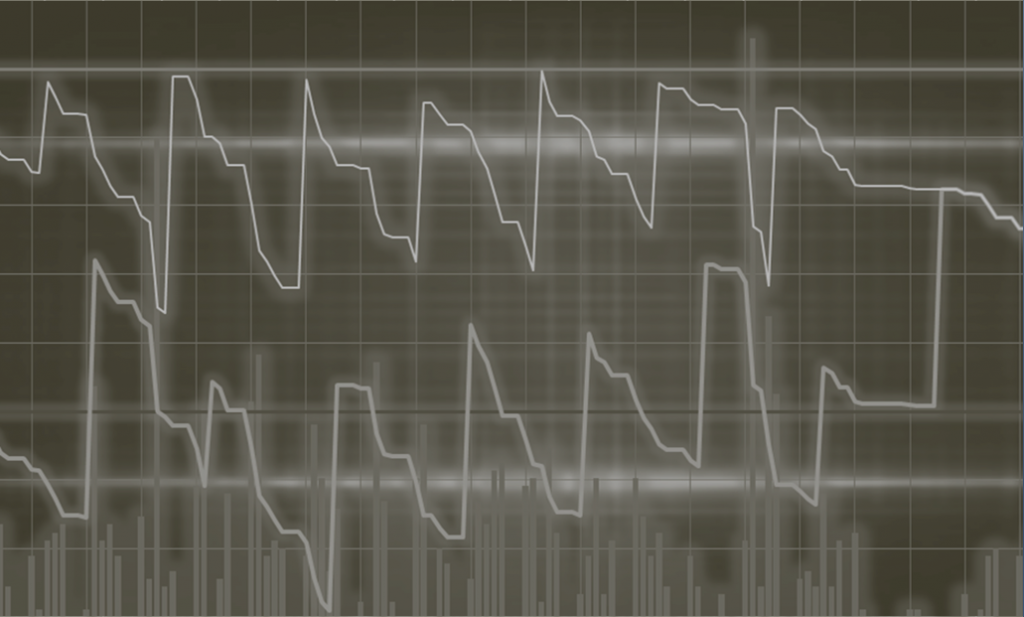One of the most prevalent inventory planning methods worldwide usually comes as the first choice after human forecasting becomes too complicated or too costly to manage. The method brings some structure into inventory management process and can be applied to specific sales patterns. But in terms of efficiency it is incapable to sustain optimal stock for a longer time and requires a lot of human intervention, therefore is relatively expensive and ineffective.
Depending on the industry, 5%-20% of the active product range is constantly changing its sales pattern. Due to the influence of various market factors, products can start changing their sales trend at any time. Therefore stock efficiency depends on the ability to spot the change and to adjust Min-Max thresholds when that change occurs. That requires constant monitoring and frequent review of parameters. But while handling thousands of articles, that’s usually not the option, therefore some parts of assortment tend to lose its effectiveness over time.
Method features
Min-Max has a variety of customizations, but in all cases, it is framed by one or two thresholds, with bottom one called Min and the top one called Max. There are also sub-methods that include only one threshold. Min works as a trigger to send an order, while the difference between the stock and Max defines the required quantity for ordering.
Thresholds can be static or dynamic. In the case of static Min-Max, fixed values are set for each and every item. This scenario works well in case of highly irregular sales patterns, but isn’t suitable for products that represent growing or shrinking sales trends, because thresholds need to be frequently adjusted.
Dynamic thresholds are usually based on moving sales averages and represent stock in days. Dynamic Min-Max has the ability to react to sales changes, but when patterns are highly irregular, such reaction can lead to the shortage or overstock of the product. After a temporary decrease in sales, Max threshold will follow and might get too low to support another sales increase. That’s how shortages are being formed.
The intensity of the reaction depends on the period that is used for average sales calculation. The longer the period is, the less intensively thresholds will behave. But defining the right intensity for every product is a challenge. The more irregular sales pattern is, the less intensive threshold behavior is needed. But every item moves differently, therefore intensity needs to be adjusted accordingly. And it depends on sales data rather than on supply terms, therefore can’t be the same for all products.
Static Min-Max
Traditional Min-Max features two static thresholds. After stock triggers Min threshold (red), the quantity between the stock and the Max threshold (green) needs to be ordered. The method allows to maintain predictable ordering quantities but makes it hard to maintain stable ordering frequency. Therefore it is unsuitable if supply restrictions on order size or ordering frequency apply. Every item can hit Min threshold at the different time. If order can’t be processed when that happens, the Min threshold tends to be lifted resulting in overstock even when there is no actual need.
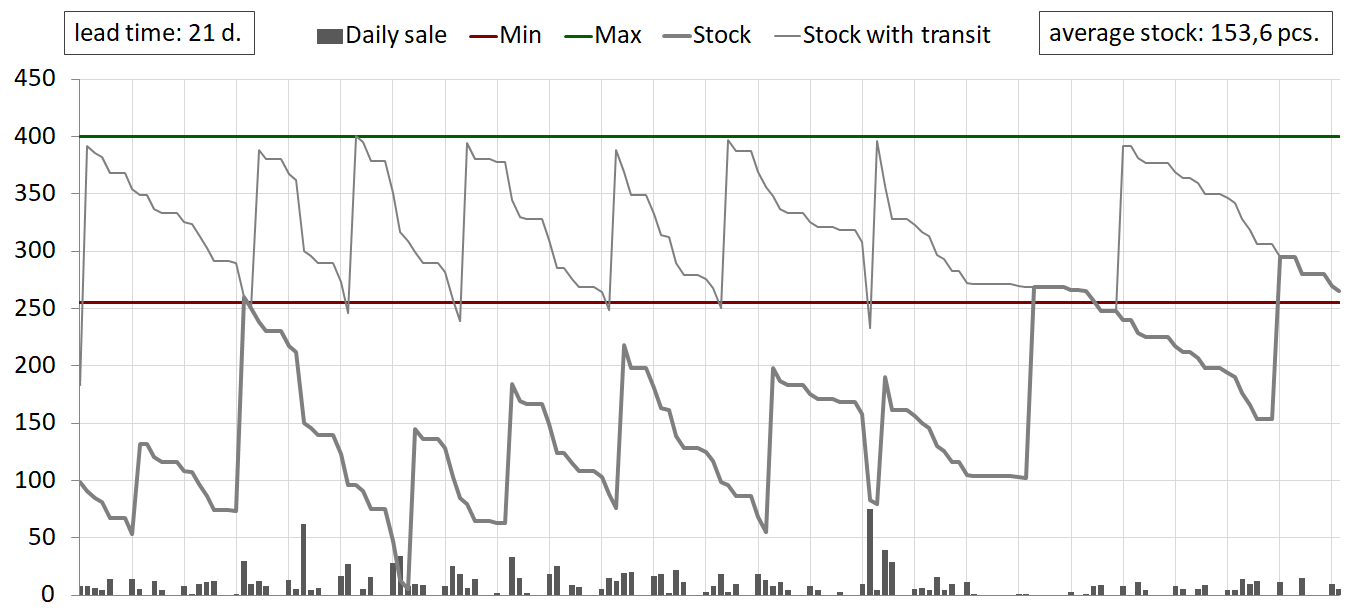
In the chart above the stock that triggers Min threshold represents the actual quantity of the product in the warehouse together with transit quantity that is ordered but not yet received. Such stock is called common stock. Depending on delivery terms in some cases, only the actual stock can be used, though defining the threshold is more complicated. In this case, ordering frequency or minimal ordering quantity needs to be set, so orders would not be processed every time while the actual stock is below the Min threshold.
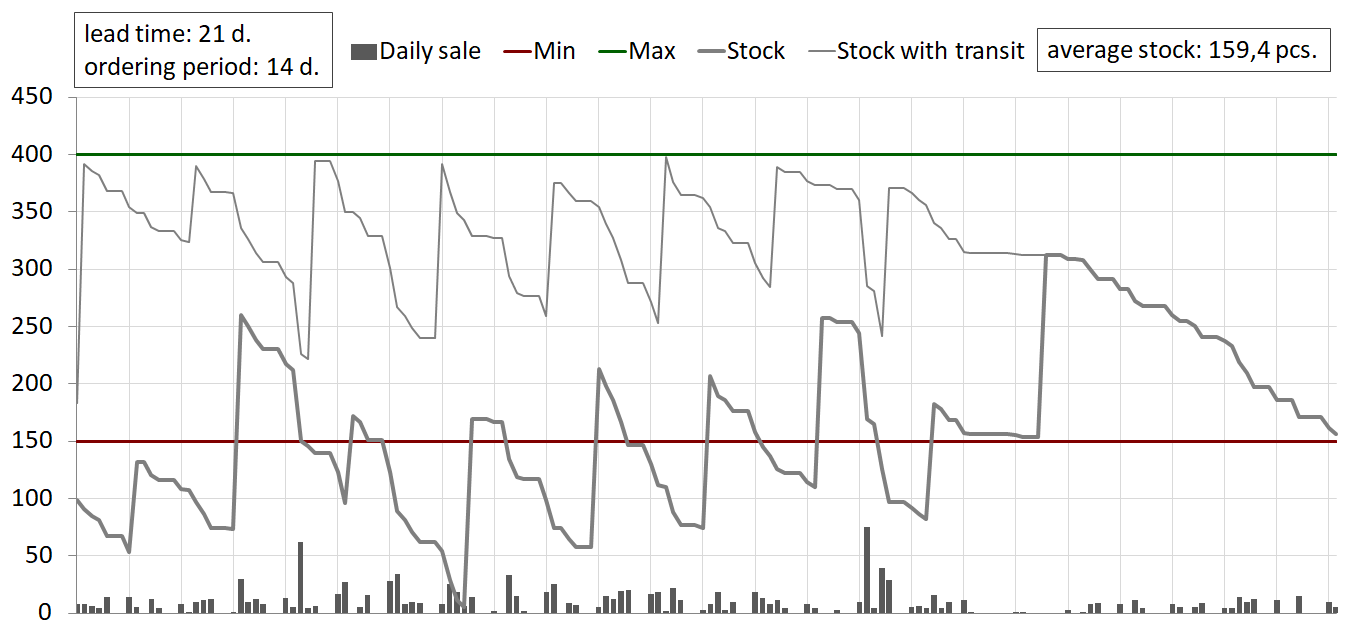
Static Max
The most common application of Min-Max method includes only single Max replenishment threshold. In this case, ordering frequency can be maintained. Ordering quantity is defined as the difference between common stock and replenishment threshold at the time when the order is being processed.
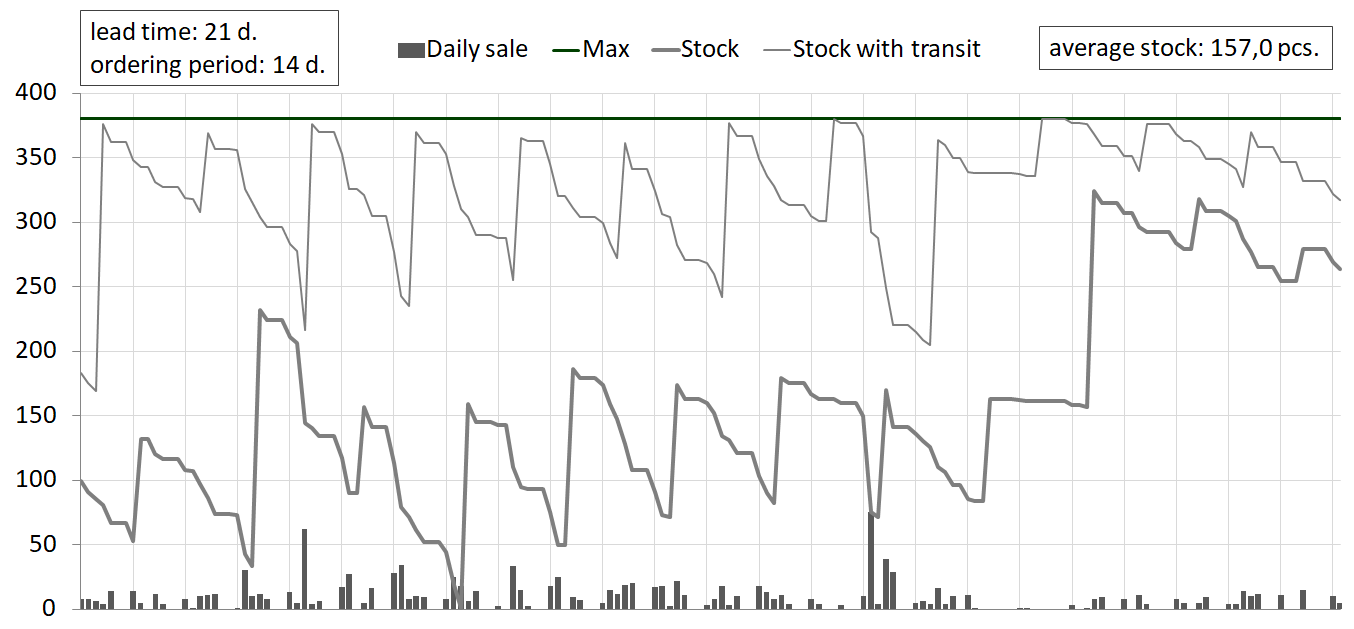
Max method allows to maintain ordering frequency and is easier to handle because there is only one threshold to set and to control. But it can also result in constant overstock or out-of-stock situations if sales dynamic changes. Sometimes, in order to avoid overstock, minimal ordering quantity can help. Meanwhile, out-of-stock can be resolved only by adjusting Max threshold accordingly.
On the other hand, static Max might be perfectly suitable when the item is sold in highly irregular quantities and at an unpredictable frequency. The more volatile sales are, the more stable replenishment threshold should be, therefore static Max usually suits well in such circumstances.
Static Min
Instead of single Max threshold, there can be single Min threshold applied. In this case, the order is triggered when the common stock hits Min replenishment limit. The ordering quantity is usually fixed, but ordering frequency is unpredictable. Therefore it is not recommended if respective supply restrictions apply.
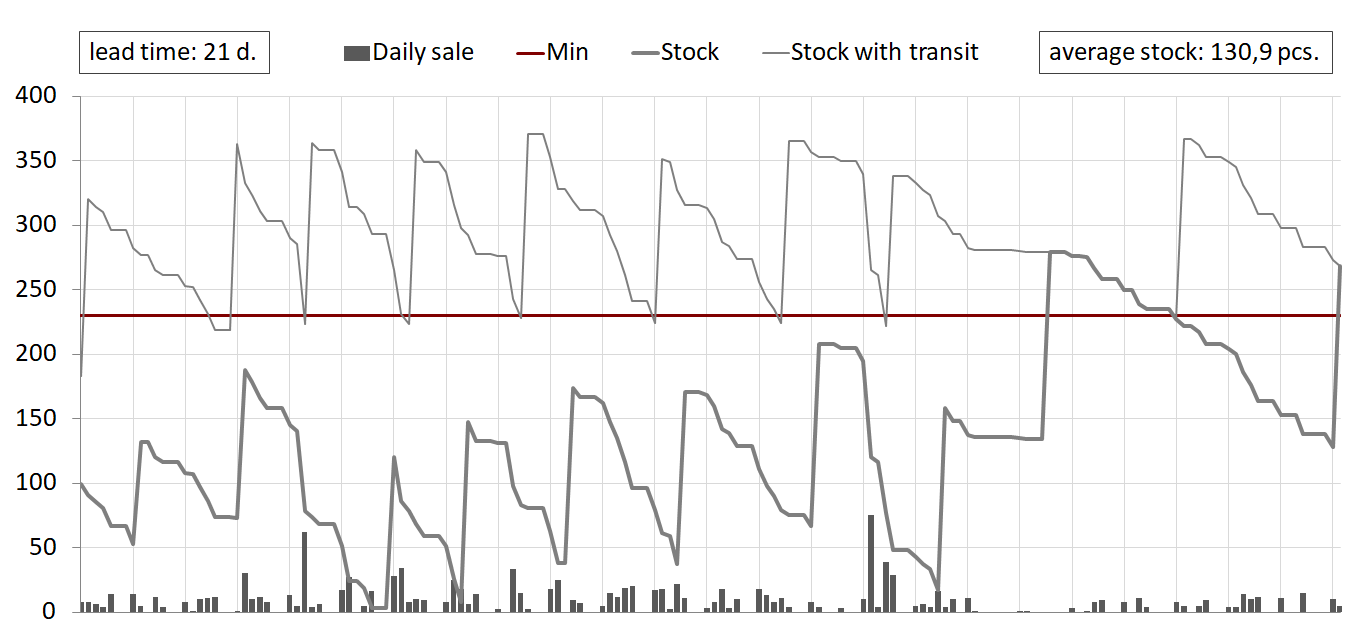
Dynamic Max
Instead of static thresholds that require constant review and adjustment, dynamic Max can be used. In such case, the threshold is based on moving sales average. And if it seemingly suggests that moving threshold can better adapt to changing sales trends, actually it does not guarantee that inventory will be effective.
Dynamic threshold reacts to sales changes. But the intensity of such reaction depends on the period that is used for average sales calculation. An example below shows dynamic Max behavior based on 45 days moving sales average. The threshold is set at 50 sales days:
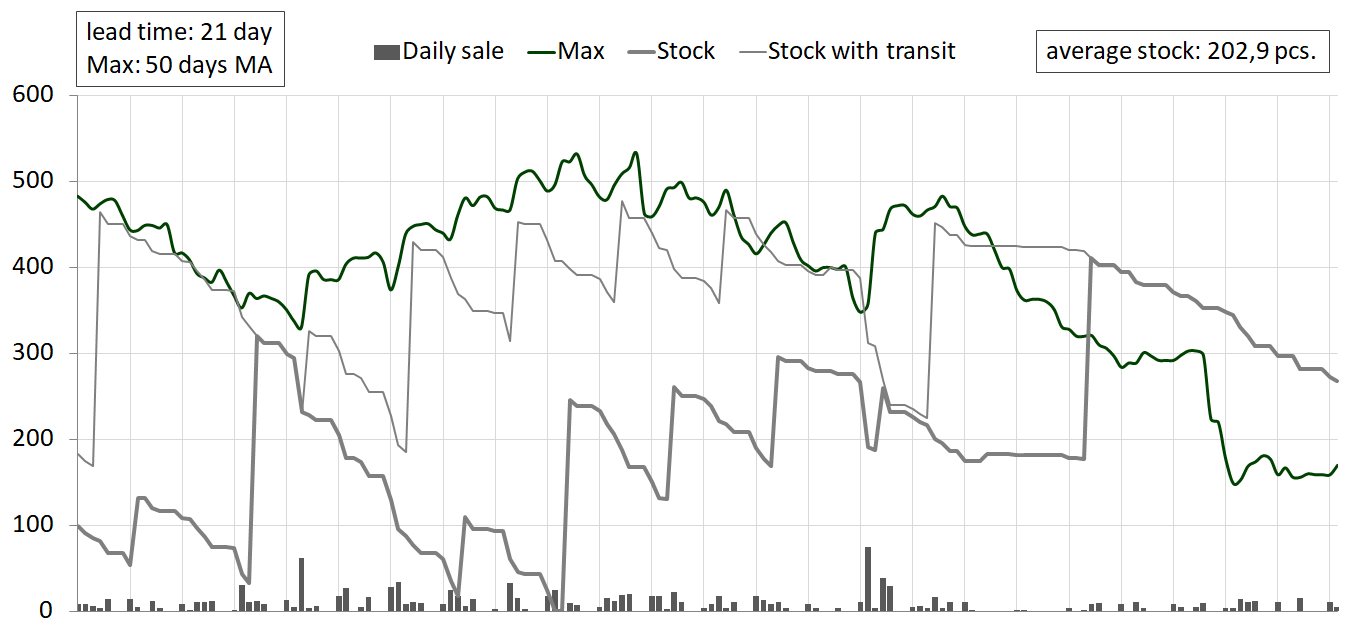
The same example, only using 90 days moving sales average. Because longer period changes Max dynamic, the threshold can be lowered to 43 sales days in order to increase efficiency:
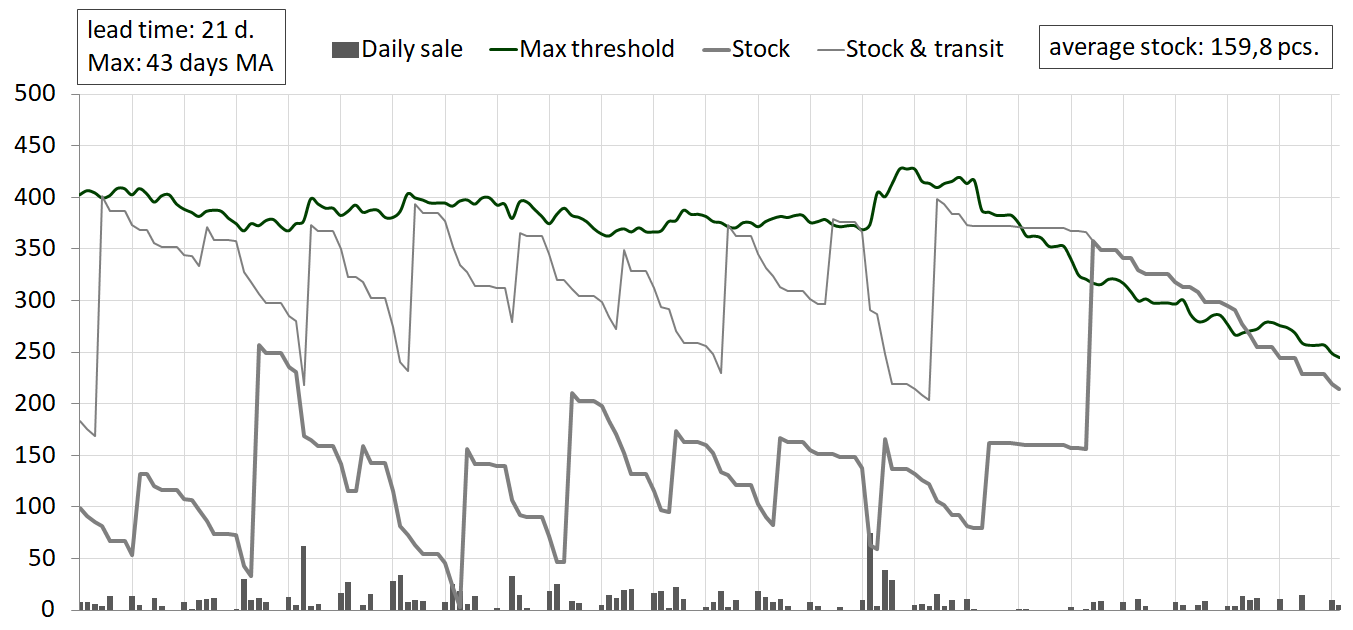
And it looks different again by using 180 days moving sales average, while threshold needs to be lifted to 50 sales days in order to avoid shortages:
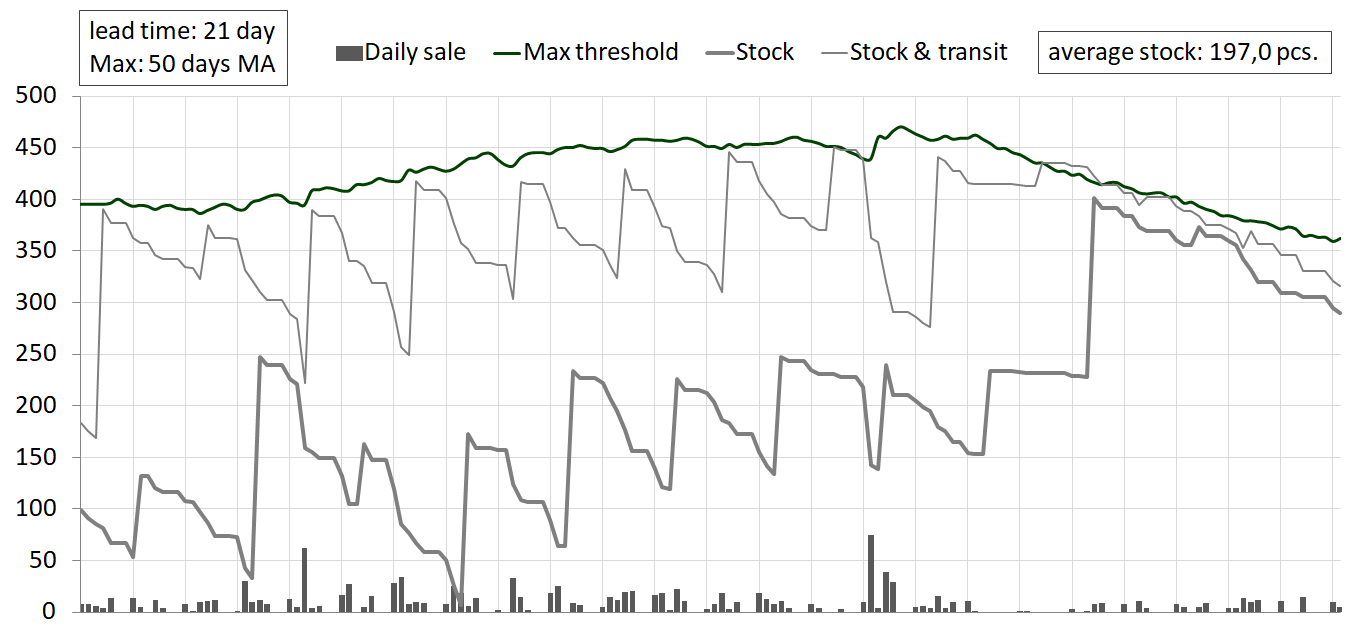
In every case the result will differ, so you have to be ready to adjust not only the period but also the size of the threshold. It can suite pretty well with continuous sales trends, especially if the period is longer, but does not guarantee optimal stock when the trend changes or when sales are volatile and hardly predictable.
Pros and cons
Min-Max is a simple and easy to use inventory management method that does not require specific knowledge. That is one of its biggest strengths. It actually helps to structure inventory management process, but in terms of efficiency, it is far from perfect.
Static Min-Max can be successfully applied when sales are regular and supply quality is good. It can also be applied in the opposite case when sales are volatile and highly irregular. If you can’t predict another sales peak but want to service your customers well, you might need to maintain stable inventory in place. Correct Max threshold can help you to achieve that.
Dynamic Max with a relatively long average calculation period can help to support continuous sales trend but will fail if that trend will start changing.
Inventory effectiveness depends on the ability to spot and adapt to sales changes. In all cases, Min-Max requires constant attention because it has no ability to adjust itself. If that’s affordable, then it is simple and easy to use. Otherwise, the risk to freeze working capital and lose some sales increases.
Efficiency is not absolute. It can be always improved. Check how much more your inventory can be optimized. Drop us a message. Eventually, you might be just one message away from extra profit and competitive advantage.
